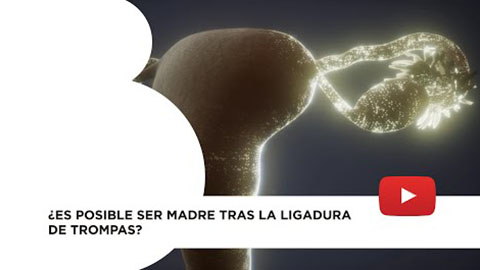
CCS (Comprehensive Chromosome Screening) and unexplained sterility
Any couple that turns to a fertility clinic undergoes a number of tests in order to diagnose the fertility issue that is making natural conception impossible. It is estimated that, at the end of the process, 1 in 4 couples are provided with no apparent reason for the reproduction issue. In these couples, no significant findings came up in the diagnostic tests carried out both on the male and the female partner.
Circumstances such as these generate a great deal of uneasiness and doubts in couples because, with no known reason for their infertility, they feel as if they were in no man’s land.
- No apparent pathological finding has been determined but the reproduction issue remains.
Not determining the origin of the fertility issue in couples is often a matter of the limitations of the techniques and analyses currently available to patients.
The embryo has been one of the significant forgotten elements in diagnosis tests, despite the fact that one of the major reasons for embryo implantation failure is abnormalities in the number of chromosomes in the embryo (embryo aneuploidy). Furthermore, some infertile patients are much more likely to produce embryos with abnormalities of this kind. These couples would undergo pre-implantation genetic diagnosis (PGD) in order to get pregnant. This process analysed the embryo’s chromosomal make-up. Only embryos with an exact number of chromosomes can lead to the birth of a healthy child. The others end in embryo arrest and pregnancy loss.
Up until now, embryo analysis was very limited and gave very unsatisfactory results. The most commonly used technique was FISH. This technique only permitted analysis of a limited number of chromosomes (specifically, 9 out of the total 23 different chromosomes in the human body). What’s more, the analysis did not cover the entire chromosome since it only observed very specific  regions of each chromosome analysed. If we think of the chromosome as a tree, with the FISH technique we are able to determine if the chromosome is present or not by looking to see if it has leaves, for example. This partial analysis gave rise to some embryos being wrongly diagnosed if the accountable chromosome or region was not included in the test.
regions of each chromosome analysed. If we think of the chromosome as a tree, with the FISH technique we are able to determine if the chromosome is present or not by looking to see if it has leaves, for example. This partial analysis gave rise to some embryos being wrongly diagnosed if the accountable chromosome or region was not included in the test.
New technologies mean extraordinary progress in fertility diagnosis. As part of our aim to provide our patients with the very latest in the field of fertility, a new diagnosis technique called array CGH was added to our services over a year ago at Instituto Bernabeu. More recently, next-generation sequencing (NGS) has been included. Both technologies permit complete chromosomal analysis of the embryo (CCS) and mean that not only abnormalities in the number of chromosomes in the embryo can be identified, but also duplications or an absence of small chromosomal regions that are responsible for embryo implantation failure or pregnancy loss during the first three months of pregnancy.
PGS/PGT-A/CCS means that the complete molecular karyotype is obtained. In other words, counting each and every one of the chromosomes in the embryo and across the entire embryo, not only the number of chromosomes studied using FISH. This means that patients with a risk of chromosomal abnormalities can get pregnant.
This technique is a huge step forward for cases of unexplained sterility and implantation failure and provides many of the couples who come to our clinic with an answer.
Dr José A. Ortiz, biochemist at IBBIOTECH, part of the Instituto Bernabeu group.
